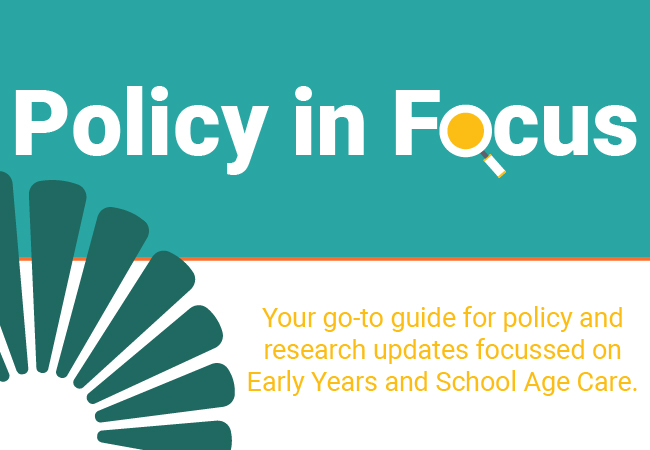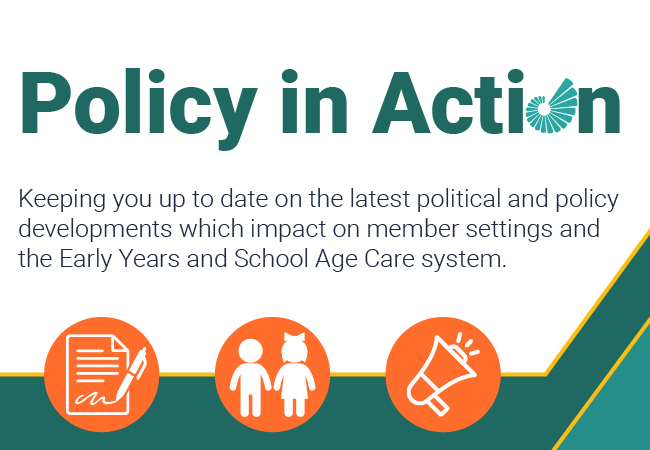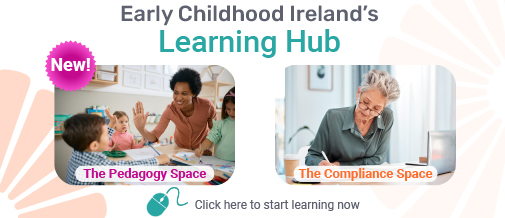Approaches to Identifying Children or Settings in Need of Additional Support

On November 13, the Department of Children, Equality, Disability, Integration and Youth (DCEDIY) published the first suite of research commissioned to support the development of a new funding model. Five papers were produced by Frontier Economics. This week, The Big Picture summarises and comments on Working Paper 5, which is the last paper of the series.
The aim of the paper is to review how other jurisdictions target children and the approaches used to ensure they are supported. In total, 38 jurisdictions were reviewed covering 28 EU countries, Australia, Canada, New Zealand, Norway, Serbia, Switzerland and the four areas of the United Kingdom. The paper also reflects on which approaches could be applied in Ireland.
The findings show that a range of family and child characteristics are used to identify which children should receive support. These were categorised into five groups:
- Economic disadvantage;
- Family composition (including the number of parents in the household, the number of siblings and the number of siblings attending the same Early Learning and Care (ELC) setting);
- Children with special educational needs or disabilities;
- Children from an ethnic or regional minority, asylum seekers or migrants, and other children with additional language requirement;
- Children in extreme need (including those who are geographically isolated or are in foster care, those whose parents are seriously ill, disabled or fleeing violence at home, and those who are known to child protection agencies).
Four broad approaches to allocating additional support to children were identified:
- Support which is provided directly to parents;
- Support which “follows the child” but is provided to settings;
- Support which is allocated to settings based on the collated eligibility of the individual children within each setting;
- Support which is allocated to settings based on the location of the setting.
The authors also assessed the relative strengths and weaknesses of each approach. It is argued that there is a clear distinction between the first two approaches and the second two approaches. On the one hand, the first two approaches offer greater efficiency in that the support is well targeted to disadvantaged children and minimises the loss of support going to less-disadvantaged children. They also offer greater responsiveness in the level of support to changing levels of need at the setting level. On the other hand, the second two approaches can offer a concentration of support within a number of selected settings, which may be essential for some types of support. They also offer greater consistency over time in support for settings. It is also highlighted that within each pair of approaches, the choice should be informed by the specific nature of the support and the desired balance of targeting efficiency, administrative simplicity and take-up.
Regarding the Irish context, the authors conclude that each of the four approaches could be implemented here in terms of data availability. But there are some exceptions for particular disadvantage characteristics, such as migration and ethnic minority background, as well as some economic disadvantage and extreme need characteristics, which may need to be collected separately.
Mapping the international experience is always a valuable exercise. But the approach taken looks at how children are supported in other countries, assuming that targeting is the best policy strategy. Meanwhile, countries such as Denmark, Finland, Sweden and Norway adopt universalist policies. By “universalism” we mean systems where all children have equal rights to access high-quality Early Learning and Care/School Age Care services. Those countries are known for having the best Early Learning and Care/School Age Care systems in the world. Early Childhood Ireland believes that creating a universalist system, inspired by the Nordic model and adapted to the Irish reality, is the best way to support babies and children here.









